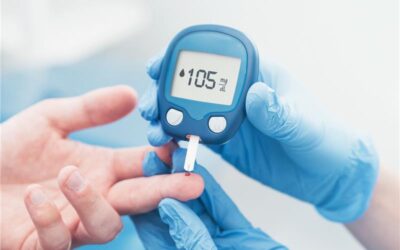Case Study
Early Screening for Urea Cycle Disorders in Plasma
The study demonstrated that untargeted metabolomics of plasma can reveal novel biomarkers for UCDs, which might provide clues to alternative pathways impacted by UCDs.
In this study, metabolomic analysis of plasma identified several new potential biomarkers of UCDs. In addition to utility in helping in the screening for UCDs, this study suggests that untargeted metabolomics of plasma samples may be beneficial for monitoring the efficacy of medical treatment. Expanding newborn screening (NBS) for UCDs and shortening the turnout time are imperative in improving the sensitivity and specificity for screening these disorders.
In this study, metabolomic analysis of plasma identified several new potential biomarkers of UCDs. In addition to utility in helping in the screening for UCDs, this study suggests that untargeted metabolomics of plasma samples may be beneficial for monitoring the efficacy of medical treatment. Expanding newborn screening (NBS) for UCDs and shortening the turnout time are imperative in improving the sensitivity and specificity for screening these disorders.

The Challenge: Understanding Urea Cycle Disorders (UCDs)
Urea cycle disorders (UCDs) are a group of inborn errors of metabolism (IEM) caused by a deficiency of any of the enzymes involved in the hepatic detoxification of ammonia. There are eight types of UCDs, named after what is missing from the urea cycle: arginase deficiency, argininosuccinate lyase (ASL) deficiency, argininosuccinate synthase deficiency (citrullinemia type 1), N-acetylglutamate synthase (NAGS) deficiency, ornithine transcarbamylase (OTC) deficiency, carbamoyl-phosphate synthase 1 (CPS1) deficiency, hyperornithinemia–hyperammonemia–homocitrullinuria (HHH) syndrome, and citrin deficiency.
The urea cycle takes place primarily in the liver, which converts highly toxic ammonia to urea for excretion by the kidneys. Subjects with UCDs present with neonatal hyperammonemia, elevated ammonia levels in the blood. If hyperammonemia is left untreated, it can progress to coma and death. Some of these patients also may exhibit developmental delay with or without seizures. Therefore, timely identification and immediate intervention are of crucial importance for the outcome of the patients. Identifying novel biomarkers to aid in the correct diagnosis of individuals with UCDs could lead to earlier diagnosis.
Metabolon Insight: Identifying Novel Biomarkers for UCDs
Metabolon’s untargeted metabolomics technology was used in this study to profile plasma samples and generate z-scores for more than 900 metabolites from 48 individuals with various UCDs.1 The aim was to assess whether untargeted metabolomic analysis in plasma can reveal novel biomarkers for UCDs, which might provide clues to alternative pathways impacted by UCDs.
The Outcome: Elucidating Metabolites for Each Type of UCD
In this study, metabolomic profiling of plasma samples from 48 subjects with various UCDs was carried out. Pathway analysis was used to identify common pathways that were altered in each UCD. Of all UCDs, individuals with arginase deficiency and citrullinemia had the most significant number of metabolites increased or decreased across samples. Biochemically, arginase deficiency leads to the accumulation of arginine, a precursor for numerous metabolites, including guanidino compounds. The mean z-score for several guanidino compounds, such as argininate, 2-oxoarginine, and N-acetylarginine, was higher than arginine, a standard biomarker used for the NBS of arginase deficiency. ASL deficiency and citrullinemia type 1 had fewer metabolite changes. Citrulline was significantly elevated in citrullinemia (z-score: 12.52) and in ASL deficiency (z-score: 2.47). Orotate was the only metabolite with a z-score ≥ 2 or ≤ −2 in individuals with OTC deficiency.
Branched-chain amino acids (BCAAs) and their branched-chain ketoacids (BCKAs) were reduced in subjects with arginase deficiency and citrullinemia. Metabolites involved in pyrimidine metabolism were significantly higher in arginase deficiency, citrullinemia, and OTC deficiency. Subjects with arginase deficiency had upregulated levels of orotate, uridine, 5,6-dihydrouracil, and ß-ureidopropionate. In citrullinemia, ß-ureidopropionate and uridine were increased, whereas, in OTC deficiency, orotate was upregulated. Nitrogen-scavenging agents are typically prescribed to minimize the risk of hyperammonemia. Metabolites of these agents were detected by the metabolomic platform, demonstrating that metabolomics can also monitor for treatment efficacy.
The Benefit: Improving the Diagnosis and Therapeutic Strategies for UCDs
In this study, metabolomic analysis of plasma identified several new potential biomarkers of UCDs. In addition to its utility in helping in the screening for UCDs, this study suggests that untargeted metabolomics of plasma samples may be beneficial for monitoring the efficacy of medical treatment, moving the needle toward personalized medicine. Expanding NBS for UCDs and shortening the turnout time are imperative in improving the sensitivity and specificity for screening these disorders.
References
1. Burrage LC, Thistlethwaite L, Stroup BM, et al. Untargeted metabolomic profiling reveals multiple pathway perturbations and new clinical biomarkers in urea cycle disorders. Genet Med. Sep 2019;21(9):1977-1986. doi:10.1038/s41436-019-0442-0






Recent Comments